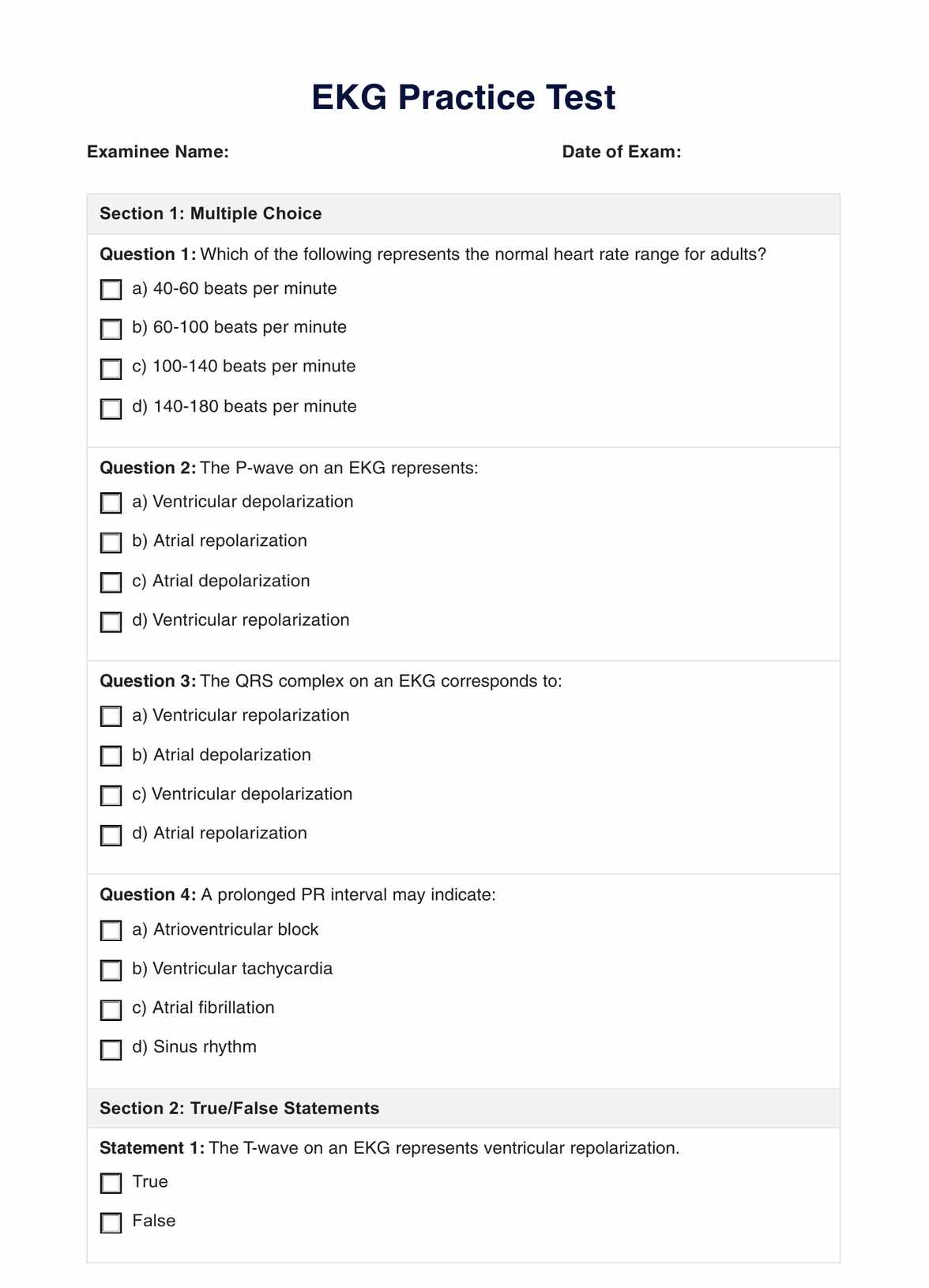To pass an EKG test, focus on mastering the fundamental rhythms, practice regularly with EKG strips, and utilize resources like EKG practice tests to reinforce your understanding. Familiarity with common cardiac patterns and systematic study will boost your confidence and performance.

EKG Practice Test
Looking to test your knowledge of EKG interpretation? Download Carepatron's free PDF of an EKG practice test to enhance your skills in electrocardiogram analysis.
EKG Practice Test Template
Commonly asked questions
The number of questions on an EKG test can vary. Typically, EKG exams range from 25 to 50 questions, with a mix of multiple-choice, interpretation of EKG strips, and scenario-based queries.
Knowing how to read an EKG is crucial for healthcare professionals as it provides insights into the heart's electrical activity. This skill aids in diagnosing various cardiac conditions, guiding appropriate treatment plans, and ensuring timely interventions for patient well-being.
EHR and practice management software
Get started for free
*No credit card required
Free
$0/usd
Unlimited clients
Telehealth
1GB of storage
Client portal text
Automated billing and online payments











